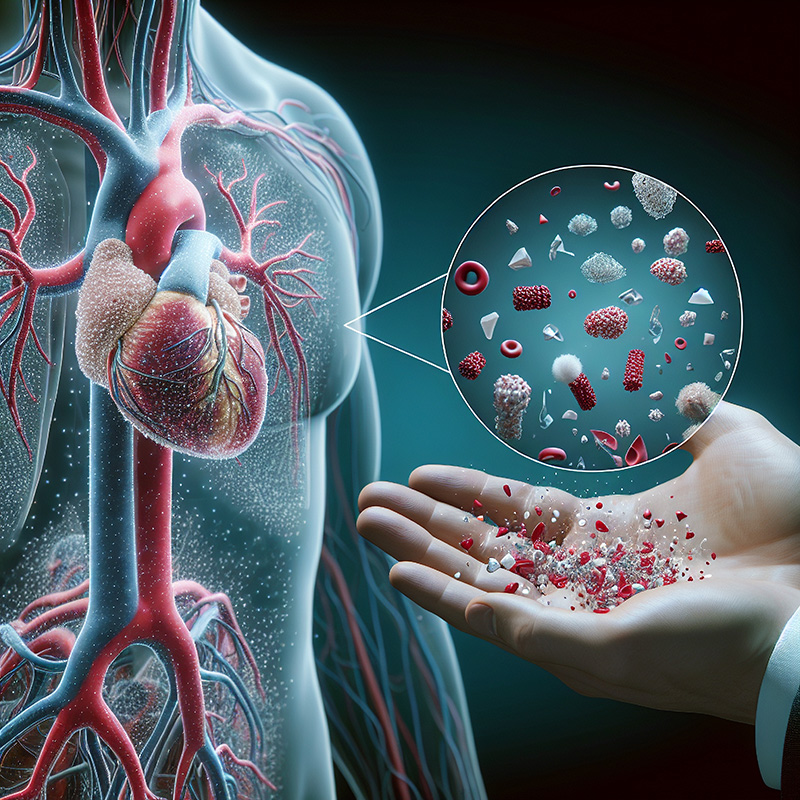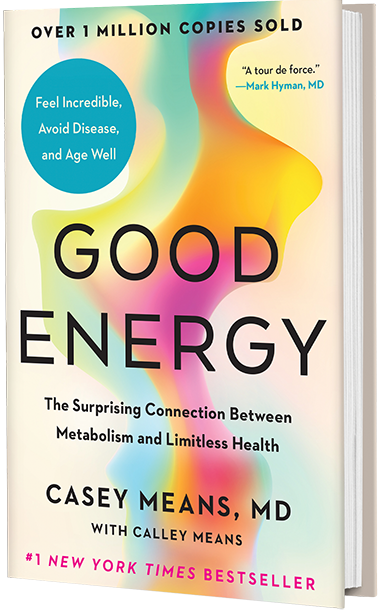Have you been frustrated by the mixed health information circulating on the Internet and social media? Me too, and I’m ready to speak up about it. I’ll share what the science shows and reflect on what I have experienced with patients during my 28 years of practice to support your personal wellness goals.
Today’s Hot Topic: Microplastics (Toxins)
Last month we learned how to create a happier, healthier you by supporting our mitochondria with NAD+ the right way. We learned the importance of these tiny but mighty organelles in supplying the body with its energy and improving your health. (Did you miss it? Click here.) Knowing what you know now, wouldn’t you do all you can to keep them healthy? I sure would.
When I first started my journey into functional medicine, I was laser-focused on hormones. I was personally struggling with a hormone imbalance that had influenced my ability to be the mother, wife, and friend I wanted to be. Back then, very few practitioners truly understood hormone dysfunction. The protocol to address symptoms like mine was to prescribe birth control pills or rebranded antidepressants like “Sarafem” (Prozac).
Those treatments somewhat stabilized my mood, but I was becoming someone I did not recognize. Realizing that I did not have a Prozac deficiency, I searched further. That realization sparked a journey of discovery to uncover the deeper imbalance. Around that time, actress Suzanne Somers began speaking publicly about hormones, guided by her physician, Dr. Uzzi Reiss, who was one of the first diplomates of the then unofficial Board of Anti-Aging Medicine. I studied and implemented his guidelines using bioidentical hormones. It changed my life. I became 99.9% symptom free.
I felt so passionate about the field that I have served as an oral board examiner for this same board for the past 15 years. As the decades have gone by, I have learned more and more about the intricacies of hormone dysfunction. It’s rarely just about the transition to menopause. We must ask:
Why are the hormones imbalanced in the first place?
Often, the root cause lies in toxins–both environmental toxicants and biological toxins. Toxins can disrupt the enzymes and nutrients our bodies rely on for hormone regulation. For instance, in my case, it was not Prozac itself that caused worsening of my issues, but a genetic enzyme deficiency that impaired my body’s inherent detoxification pathways.
So, we cannot ignore toxins (man-made chemicals) or biotoxins (toxins of biological origin) as a potential culprit of our hormonal and health issues. With great delight, I have seen tons of influencers and wellness advocates trying to shed light on toxins, especially microplastics. These tiny plastic fragments (under 5mm) are an inescapable part of our modern world. They have been found in nearly every corner of the earth, from the top of our mountains to the depths of our oceans, and increasingly, in our bodies.
Growing evidence links microplastics to cardiovascular disease and arterial plaque progression. Even more disturbing, recent research shows they can cross the placenta during pregnancy and breach our blood-brain barrier. A 2019 Australian study estimated that we ingest a credit card’s worth of microplastics every week, through our food, air, water, and even skin. These particles lodge in our lungs and intestines, disrupt our gut microbiome, travel to our liver, and circulate throughout the body. This ultimately causes inflammation, oxidative stress, and mitochondrial dysfunction.

Microplastics are everywhere: in water bottles, food packaging, utensils, cosmetics, fragrances, equipment and toys. Recently, tea bags and chewing gum have been found to contain microplastics. A new French study even discovered plastic particles in glass-bottled water, due to the plastic-lined caps.
The chemicals used to manufacture plastics—like phthalates, which are used to make plastics pliable, and bisphenol A (BPA) used in its manufacturing—are linked to hormone disruption, infertility, obesity, cancer, and neurodegenerative disease. But most importantly, what matters is your individual toxic burden or load, which determines how your body will react.
I tell all my patients: we live in a toxic soup, and we all have different detoxification abilities based on our genetics, nutritional status, and lifestyle.
Our best bet is to reduce toxins in and help support toxins out. If the bucket of toxins is overloading our ability to detoxify them, we then get the damaging oxidative stress, inflammation, and mitochondrial insults as a result. I am seeing more and more Polycystic Ovarian Syndrome (PCOS) that has been linked to this. It’s estimated that teenagers are using up to 18 personal care products per day that are full of chemicals. If you are being bombarded by toxins and you are not doing anything to support detoxification, while your body is dealing with other infections or biotoxins, you can become hypersensitive to toxins resulting in a condition toxicant induced loss of tolerance (TILT). It is like post-traumatic stress disorder of the immune and nervous system, and it is much more difficult to treat.
If you feel your mood is labile, your brain is foggy, your weight and sugars are going up, you are having fertility issues, you are super sensitive to foods, fragrances, tobacco smoke, cleaning supplies and new carpet, and antibiotics and vaccines make you sick, or you are just “feeling off,” then your body’s inability to handle your burden of toxins and microplastics may be the culprit or root cause. You can take the Quick Environmental Exposure and Sensitivity Inventory (QEESI) at https://tiltresearch.org, and visit http://iseai.org/ to find a clinician trained in environmental medicine who can assist you in the proper testing and support.
How can I lower my toxic load?
The best tool is prevention! Here are a few practical steps you can take:
Reduce “Toxins In”
- Use stainless steel bottles with filtered tap water
- Eat organic foods (Check the EWG’s Dirty Dozen and Clean Fifteen guides)
- Use reusable cloth or paper bags to shop
- Limit consumption of certain high-mercury seafood
- Use loose tea instead of tea bags
- Avoid microwaving or heating foods in plastic containers
- Avoid polyester, nylon and acrylic in your clothing
- Avoid chewing gum
- Choose fragrance-free, clean beauty products and reading labels
Support “Toxins Out”
- Optimize your gut health and nutritional status
- Exercise regularly and get good sleep
- Practice mindfulness and stress reduction
- Use sauna therapy (safely and under guidance)
- Consider supporting detox with nutrients like:
- Glutathione (IV, topical, intranasal, nebulized, or liposomal forms)
- NAC, Vitamin C, alpha-lipoic acid, milk thistle, SAM-e, and whey protein
Other therapies are being investigated. More studies are needed before I can recommend them, as some therapies can be more damaging than good. Plasmapheresis seems promising, but it is expensive and not yet readily available. As always, please check the credentials of who is advising you, and don’t make yourself crazy over it.
Focus on what you can control to keep those good energy cells thriving: eat well, stay calm, sleep deeply, and move your body to support your health.
Wishing you wellness,
Dr. Anjali Noble
P.S. Let me know what you’d like me to cover next!
Recommended Reading
Good Energy
by Casey Means, MD
This is another trusted source of information backed by science. She too is trying to shift the paradigm of medicine to a more preventive model. Chapter 8 speaks on all the environmental toxins that impede our mitochondrial health and more ways to support them. I love her quote by Dhru Purohit on water, “Either you have a filter, or you become the filter.”
– Dr. Anjali Noble
https://www.caseymeans.com/goodenergy
References
- Zhang T, et al. Tiny Trouble: Microplastics, Nanoplastics, and their Heartfelt Impact on Cardiovascular Health. Cardiovascular Research. 2025 April 18: cvaff068.doi:10.1093/cvr/cvaf068. PMID: 40147666
- Ziani, K et al. Microplastics: A Real Global Threat for Environmental and Food Safety: A State of the Art Review, Nutrients 2023 Jan 25: 15 (3):617. doi:10 .3390/mu15030617
- McBrady, Rachel. “Birds on Remote Island Make Gut-Wrenching Crunching Sounds Because They Are Full of Littered Plastics,” com.
- Miller, CS, Prihoda, T. J. , The Environmental Exposure and Sensitivity Inventory (EESI): a standardized approach for measuring chemical intolerance for research and clinical applications. Toxicology and Industrial Health 15:370-385 (1999)
- Palmer, RF et al, Validation of a Brief Screening Instrument for Chemical Intolerance in a Large U.S. National Sample. Int J Environ Res Public Health. 2021 Aug 18; 18 (16):8714. doi:10.3390/ijerph18168714.PMID:34444461.
- Chaïb, S. et al. Microplastic contaminations in a set of beverages sold in France. Journal of Food Composition and Analysis, 2025,144, pp.107719. �10.1016/j.jfca.2025.107719
- Melnick, R.L. & Schiller, C. M. Mitochondrial toxicity of phthalate esters. Environmental Health Perspective, 45, 51-56. Pubmed. PMID:7140696
- Cirillo T, Latini G, Castaldi MA, et al. Exposure to Di-2-Ethylhexyl Phthalate, Di-N-Butyl Phthalate and Bisphenol A Through Infant Formulas. Journal of Agricultural and Food Chemistry. 2015;63(12):3303-10. doi:10.1021/jf505563k.
- Tumu K, Vorst K, Curtzwiler G. Endocrine Modulating Chemicals in Food Packaging: A Review of Phthalates and Bisphenols. Comprehensive Reviews in Food Science and Food Safety. 2023;22(2):1337-1359. doi:10.1111/1541-4337.13113.
- Baneshi M, Tonney-Gagne J, Halilu F, et al. Unpacking Phthalates From Obscurity in the Environment. Molecules (Basel, Switzerland). 2023;29(1):106. doi:10.3390/molecules29010106.
- Woodruff TJ. Health Effects of Fossil Fuel-Derived Endocrine Disruptors. The New England Journal of Medicine. 2024;390(10):922-933. doi:10.1056/NEJMra2300476.
- Banaderakhshan R, Kemp P, Breul L, et al. Bisphenol a and Its Alternatives in Austrian Thermal Paper Receipts, and the Migration From Reusable Plastic Drinking Bottles Into Water and Artificial Saliva Using UHPLC-MS/MS. Chemosphere. 2022;286(Pt 3):131842. doi:10.1016/j.chemosphere.2021.131842.
- Palsania P, Singhal K, Dar MA, Kaushik G. Food Grade Plastics and Bisphenol A: Associated Risks, Toxicity, and Bioremediation Approaches. Journal of Hazardous Materials. 2024;466:133474. doi:10.1016/j.jhazmat.2024.133474.
- Martínez-Ibarra A, Martínez-Razo LD, MacDonald-Ramos K, et al. Multisystemic Alterations in Humans Induced by Bisphenol a and Phthalates: Experimental, Epidemiological and Clinical Studies Reveal the Need to Change Health Policies. Environmental Pollution (Barking, Essex : 1987). 2021;271:116380. doi:10.1016/j.envpol.2020.116380.
- Singh S, Li SS. Bisphenol a and Phthalates Exhibit Similar Toxicogenomics and Health Effects. Gene. 2012;494(1):85-91. doi:10.1016/j.gene.2011.11.035.
- Callaghan MA, Alatorre-Hinojosa S, Connors LT, Singh RD, Thompson JA. Plasticizers and Cardiovascular Health: Role of Adipose Tissue Dysfunction. Frontiers in Pharmacology. 2020;11:626448. doi:10.3389/fphar.2020.626448.

